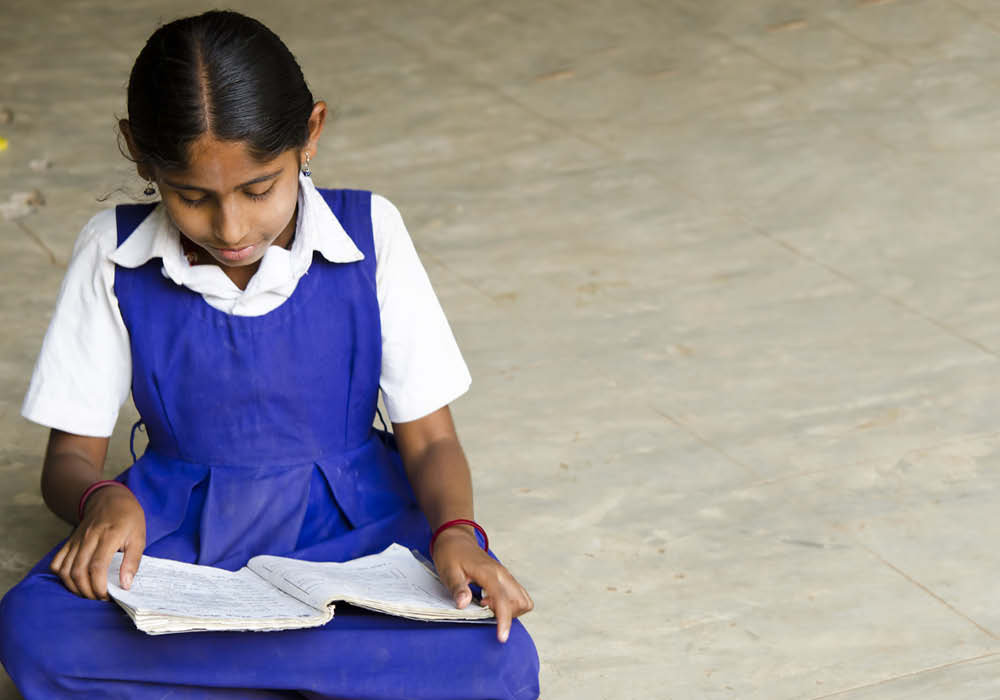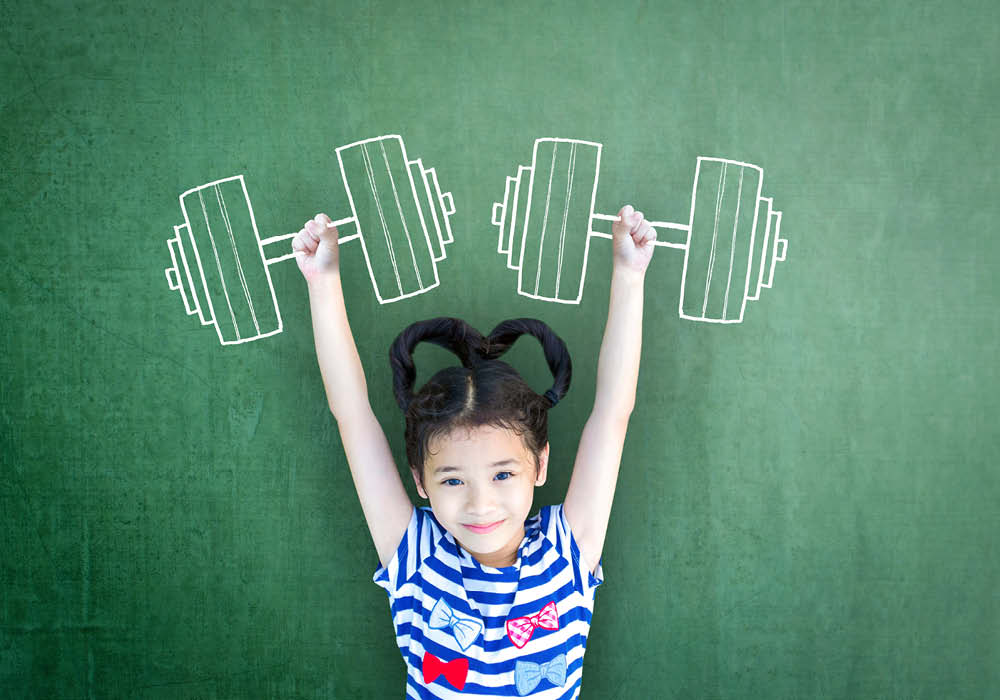Census 2011: The child sex ratio of girls to boys in India within the age bracket of 0-6 years deteriorates 919 girls per 1,000 boys from 927 girls per 1,000 boys in 2001.
UNFPA’s State of World Population Report 2020: India alone accounts for 45.8 million of the world’s 142.6 million “missing females” over the last 50 years.
UNICEF Report: Each year, at least 1.5 million girls under the age of 18 years get married in India, making it home to the largest number of child brides in the world.
Each of these findings focuses on just one thing: The girl child in India faces a myriad of problems that threaten or jeopardise her very existence. Even if she does survive the first few years of life by overcoming threats like sex-selective abortions and infanticide, social practices like child marriage—and even female genital mutilation in certain communities—can limit her prospects and hinder her health so severely that the cycle of intergenerational poverty just keeps continuing. Add to this the threats to safety, nutritional challenges, still limited access to education and high rates of dropouts after puberty, limited career prospects due to career breaks and gender pay gaps, and challenges posed by the glass ceiling, and you know that very few categories of our population have it as difficult as women do.
We all talk about gender equality and empowering women, but given these myriads of challenges, achieving either of these can seem extremely difficult. So, do we give up? Of course not! Here are six ways you can protect the girl child in India and help her overcome all sorts of barriers throughout her life.

Educate Her
Even with the implementation of government schemes like Beti Bachao Beti Padhao, a girl child’s access to education can be limited. You have to understand that this is an intersectional issue, with barriers like caste and class limiting access even more than usual, especially in rural areas. With the COVID-19 pandemic and spate of online classes, another issue that has come to the fore is the gender digital divide. All of these have to be addressed to ensure that the girl child has access to basic education.
But targeting academic education for the girl child alone will not resolve this issue, especially since when it comes to health and hygiene education, it is the mother or parents who impart it first. Educating adult women is, therefore, critical here. This has especially been highlighted during the pandemic, where knowledge of how diseases are transmitted, can be prevented, and where to go to get treatment have played a critical role. For women, this health education has to go above and beyond because reproductive and sexual health parameters must also be taken into account.
Employ Her
Can educating her be of any benefit if she has low or no prospects of employment? The World Bank revealed in 2019 that in India, the female labour force participation rate has dropped in the last few decades, from 30.27 per cent in 1990 to 20.8 per cent in 2019. What’s worse is perhaps the fact that a large chunk of the Indian women who do have employment are working in the unorganised sector. Recently, data from India’s first unorganised labour registration platform, eShram, revealed that 50.02 per cent of the registered 4.15 crore workers were women. Agriculture and construction emerged as the key sectors of unorganised labour employment. A critical factor here was that most of these registered workers did not have an Aadhar-linked bank account, making their transition into the organised labour force and access to beneficial government schemes more difficult.
Even when women in India make it to the organised sector, many issues emerge. The pay gap issue apart, women in the workforce often do not get opportunities due to the fact that they tend to take career breaks due to maternal or caregiving duties at home. Making a comeback after such a career break can be difficult, which is why upskilling and reskilling opportunities for women are urgently needed. Equally important are sensitisation drives that make workplaces safer for women.

Raise Awareness
Yes, educating women and the girl child is critical for her wellbeing. But, nobody lives in a vacuum, let alone women. Without educating boys, men and people of every gender about the needs and challenges a woman faces, growth would not be possible at all. Raising awareness, believe it or not, starts with you, the individual. You have to educate yourself about everything from mental and physical health to the equal rights of every citizen in India, including women. You have to know why increased women’s education and participation in India’s economy can generate more wealth for the entire nation. You have to know why empowering a woman with access to public health, transport, finances and other critical life choices can also ensure your safety and wellbeing, at home and beyond. You could easily learn more about each of these issues and share your findings with those around you. From you to the family, from the family to the community, and from the community to the nation—that’s the flow in which you and small actions you take can make a huge, cumulative difference.
Use Laws To Protect Her
Knowing what your rights are is very important. Knowing which rights and laws can help you protect the girl child or woman around you is critical. You might start by thinking of only the biggies here—meaning the right to vote—but there are more laws that you should know about. Which laws protect your girl child from being forced into marriage? Which laws guarantee that she can have access to employment? Which ones can she cite in case she is stalked, assaulted or attacked? Which laws ensure that if she has an unwanted pregnancy, she can legally abort the foetus for the sake of her health? Which acts of law ensure that she is liable to equal and humane treatment if she has a mental health issue or any form of disability? You have to know the answers to these questions first to be able to equip the girl child with the same knowledge, so get started on educating yourself on the girl child’s legal rights right now.

Hear Her Out
Can you ever know what the person in front of you is going through unless you ask them and they open up to you? No, of course not. The very first mistake we often make is to assume what a woman wants, instead of asking what her needs are. In a recent interview, mental health rights activist, Ratnaboli Ray, revealed to us that the very articulation of a problem proves that you are accepting that there is a problem—it’s the first and necessary step to solving the problem. So, don’t assume what the girl child or the woman in front of you is going through. Ask her, and assure her that by speaking out, she will help remove the stigma about any given issue—whether it’s menstrual pain or mood swings or sexual harassment—not just from her mind but also from yours. Create that safe space for conversation and open expression, and watch her thrive!
Ask For More
Yes, we already have plenty of laws in place that can help out the girl child or woman in need. But we do need more. For example, sex selection is apparently illegal in India for the doctors and operators of technology as per the Pre-Natal Diagnostic Techniques Act of 1994 and the Pre-Conception and Pre-Natal Diagnostic Techniques Act of 2002. But the loophole that most people still utilize is that it does not hold the parents who go for sex-selective abortions of the female foetus due to son bias at all accountable. Similarly, taking dowry is illegal, but we let informal forms of dowry pass off as if they are fine and not as harmful. So, you need to ask your local representatives, state and national governments for more laws that not only address these loopholes in existing laws but also for methods through which they can be implemented better.